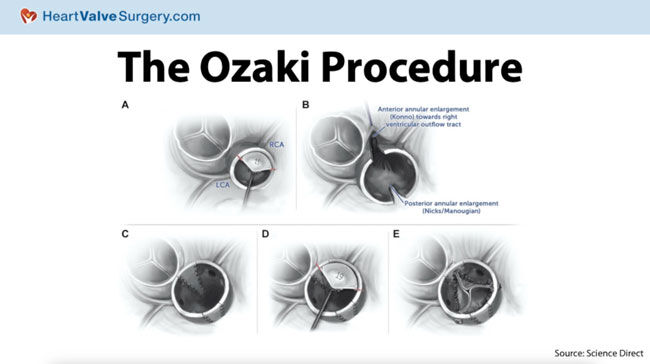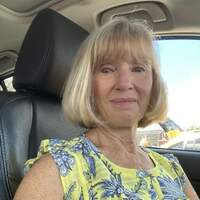Ozaki Procedure: New Research for Aortic Valve Patients
Written By: Adam Pick, Patient Advocate, Author & Website Founder
Medical Expert: Douglas Johnston, MD, Chief of Cardiac Surgery at Northwestern Medicine
Published: June 18, 2023
Patients diagnosed with aortic valve disease have different treatment options to consider. While many patients are familiar with aortic valve replacement, aortic valve repair and the Ross Procedure, there is a lesser-known technique called the Ozaki Procedure that is getting more attention within our community.

Paige Hahn (Aortic Valve Patient)
For example, I just received a question from Paige Hahn about the Ozaki Procedure. Paige asks, “Hi, Adam. I’m 29-years-old and I have a bicuspid aortic valve. I also have an aneurysm. I’m thinking about starting a family in the next few years. After meeting with three different cardiac surgeons, I was offered a newer technique as an alternative to a tissue or mechanical valve. That technique is the Ozaki Procedure. What is the latest update about this procedure?”
To answer Paige’s question, I was fortunate to interview Dr. Doug Johnston, the Chief of Cardiac Surgery at Northwestern Medicine in Chicago, Illinois. As you may know, Dr. Johnston is an aortic valve specialist who has successfully treated many patients in our community.
Key Learnings About the Ozaki Procedure
Here are important findings about the Ozaki Procedure from Dr. Johnston:
- The Ozaki procedure is a unique aortic valve procedure that uses the patient’s own pericardium to recreate the patient’s defective valve. During the Ozaki Procedure, also known as AVNeo (Aortic Valve Neocuspidization), replacement leaflets are made from the patient’s pericardium and then sewn back into the aortic valve. Developed by Dr. Shigeyuki Ozaki in 2011, a key advantage of the Ozaki Procedure is that the patient gets to keep his or her own tissue in the aortic valve position — with no foreign material implanted (e.g. mechanical valve or bioprosthetic tissue valve).

- New research was recently published comparing patient outcomes of the Ozaki Procedure to aortic valve replacement using cow (bovine) bioprosthetic tissue valves.
- “What we found is that the Ozaki operation tends to narrow less,” states Dr. Johnston. “But, there was an increased rate of valve leakage in the first few years after surgery, not dramatic, but something that we want to be thoughtful about.”
- When selecting an aortic valve procedure, it is critical that the patient’s anatomy be considered. For example, Paige has an aneurysm. Doctor Johnston states, “For somebody with an aneurysm, like Paige, we want to be very thoughtful about the choice of procedure. And, whether the aneurysm is big enough that it may alter the impact of a certain choice.”
- Another big consideration for women, when selecting an aortic valve procedure, is whether-or-not they are thinking about getting pregnant in the future. Dr. Johnston states, “Mechanical valve is out since you want to have kids. You still have really good choices. We want to be thoughtful about a tissue valve, a Ross procedure or the Ozaki / AVNeo Procedure.”
Many Thanks Dr. Johnston & Northwestern Medicine
Many thanks to Dr. Johnston for taking the time to educate our patient community about the Ozaki / AVNeo Procedure. We also want to thank the entire Northwestern Medicine team for taking such great care of patients from the HeartValveSurgery.com community!
Related Links:
- Surgeon Q&A: Amiodarone for Atrial Fibrillation After Heart Surgery
- See Dr. Johnston’s Interactive Surgeon Profile
- Explore the Northwestern Medicine Heart Valve Microsite
Keep on tickin!
Adam
P.S. For the deaf and hard of hearing members of our community, I have provided a written transcript of my interview with Dr. Johnston below.
Video Transcript:
Adam Pick: Hi, everybody. It’s Adam with heartvalvesurgery.com. We’re at the Society of Thoracic Surgeons conference. I am thrilled to be joined by Dr. Doug Johnston who’s the chief of cardiac surgery at Northwestern Medicine in Chicago, Illinois. Dr. Johnston, great to see you again.
Dr. Johnston: Hey, great to see you again, Adam.
Adam Pick: Yeah, as you know, you’re answering patient questions. We’ve got a great question from Paige. Paige asks, “Hi, Adam. I’m 29 years old and I have a bicuspid aortic valve. I also have an aneurysm. After meeting with three different cardiac surgeons, I was offered a newer technique as an alternative to a tissue or mechanical valve. That technique is the AVNEO / Ozaki procedure. What is the latest update about this procedure?” Before you answer, Dr. Johnston, I also want to let you know that Paige is also thinking about starting a family in the near future. What are your thoughts for her?
Dr. Johnston: Paige, that’s an excellent question. We actually just published a study comparing some outcomes with the Ozaki procedure in Japan versus a traditional bovine pericardial valve that patients may be very familiar with. It’s one of the few studies of its kind, a very large series.
Essentially, what we found is that the Ozaki operation tends to narrow less. For those who don’t know, the Ozaki procedure uses your own pericardium to recreate a valve, but there was an increased rate of valve leakage in the first few years after surgery, not dramatic, but something that we want to be thoughtful about.
In particular, for somebody with an aneurysm, like Paige, we want to be very thoughtful about the choice of procedure and whether the aneurysm is big enough that it may alter the impact of a certain choice. Mechanical valve is out since you want to have kids. You still have really good choices. We want to be thoughtful about a tissue valve, a Ross procedure perhaps or Ozaki, and get your anatomy to think about those things. I’m glad you’re getting multiple opinions.
Adam Pick: Paige, I hope that helped you. I know it helped me learn a lot more about the Ozaki procedure. Dr. Johnston, on behalf of patients at heartvalvesurgery.com and patients all over the world, thanks for all the great work you and your team are doing at Northwestern Medicine. Thanks again for all your help.




